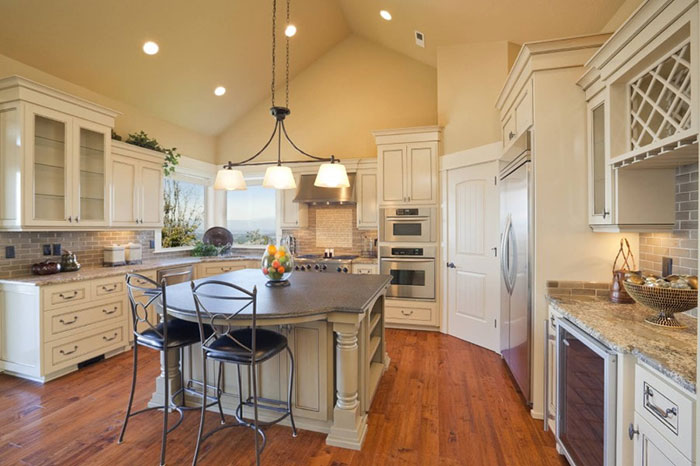Why might a transitional furniture style be perfect for your home

Have you found yourself feeling stuck between either prim and proper decor or a style that lacks warmth? Or, perhaps your chosen design aesthetic has left you feeling too restricted? If this is the case, then you might like to consider a transitional furniture style.
What is transitional furniture?
A transitional design style falls somewhere in the spectrum between the minimalistic modern and comforting traditional styles. In this sense, transitional furniture may be more modern or more traditional, depending on the overall theme of the room.
Or, on the other hand, you may opt for transitional furniture that has a more neutral aesthetic, neither falling into either the traditional or contemporary categories. However, this by no means implies that it has no style at all, just that its style aesthetic is more understated.
Transitional furniture may not always be referred to as ‘transitional’. Instead, you may see phrasings such as ‘timeless’, ‘updated’, or a ‘modern twist’ on the traditional. As you can see, this can leave you with a broad range of options when it comes to transitional stylings.
Characteristics of transitional interior design
Typically, transitional interior design will conform to a few key design principles, which you can find below.
- Use a neutral colour palette, including cream, grey, black, and beige.
- Feature one main colour, and then use graded tones of this hue to compliment it. This is known as tone on tone colouring.
- The different tones can be layered for depth and texture. Experiment with different textures to add contrast to the room.
- Keep it simple – stick to one feature wall and an edited number of decorative elements and accessories.
- Upcycle furniture and material that were used in older homes, incorporating it into your design. For example, take an old, worn out table and upcycle it using metal table legs to elevate it to the next level.
- If you don’t like (or have the time for) second hand furniture, you can purchase new ‘traditional-style’ features.
- Stick to traditional materials and fabrics such as leather, wood, corduroys, suede, and chenille, and add mirrored, metallic, and glass furnishings.
- Keep lines clean and straight as opposed to too many flowing curves.
Overall, in effect, the idea of transitional decoration is to transition materials and fabrics we associate primarily with function to upscale, stylish luxury.
So, is transitional furniture perfect for your home?
Transitional furniture is perfect for those who aren’t wholly taken by either ultra-traditional or contemporary styles, falling anywhere in the middle. It is also a great option for households that are looking to combine, integrate, or blend inherited or collected furniture into a more cohesive, contemporary style.
When done effectively, transitional decor can elevate your home, making it look more contemporary and upmarket without having to replace much of your old furniture. It can be a great way of simply using what you have, and taking it to the next level.
Overall, whether transitional decor is perfect for your home is ultimately down to your resources, budget, and design aesthetic. Traditional furniture can be extremely flexible and affordable, serving you well for many years to come.





